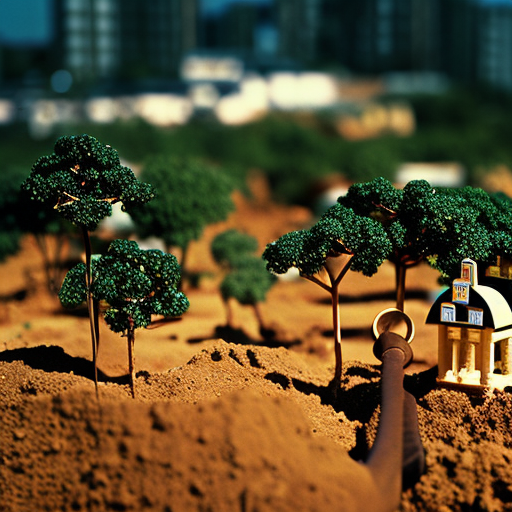Participatory planning in Kenya’s drylands: The Ward Development Planning model – Kenya
Participatory planning in Kenya's drylands: The Ward Development ... ReliefWeb



Summary
The Ward Development Planning (WDP) model is a participatory planning approach currently implemented in five counties in Kenya’s arid and semi-arid areas. The WDP model provides the opportunity for local knowledge and development priorities to be integrated and funded through Ward Development Plans. These plans are multi-sectoral and include a comprehensive range of public goods investments that build resilience to climate change and other shocks. This brief summarises key learning on the WDP approach and gives recommendations for scaling up participatory planning for contextually appropriate and locally legitimate resilience-oriented development.
Key findings
-
Bottom-up approach to development planning
There is great potential to take a bottom-up approach to development planning in the drylands that is inclusive of the knowledge, input, and support of dryland communities. To date, limited participation of pastoralists in government planning processes has resulted in misguided development interventions in the drylands that undermine livelihoods and increase vulnerability.
-
Ward-level planning institution
WDP is a local development planning process that deepens Kenya’s devolution to the ward level and addresses the chronic political and economic marginalisation that is evident in dryland regions. The ward-level planning institution fills a gap between community- and county-level planning institutions and devolves decision-making to the ward level.
-
Empowerment of pastoralist communities
WDP empowers pastoralist communities to directly engage in development planning through participatory and deliberate processes. There is effective representation and accountable decision-making through inclusive public selection processes of Ward Planning Committees (WPCs), whose role it is to identify communities’ development needs and priorities and to oversee the implementation of a Ward Development Plan. The high social embeddedness and deliberate selection of WPC members make these individuals well placed to represent the community in mediating conflict, as well as to share knowledge and information that helps address community needs and builds resilience.
-
Contextually relevant and locally appropriate investments
WDP prioritises development action at the local level according to needs identified by the community. This ensures that investments are contextually relevant and locally appropriate, and avoids wasteful, redundant, or maladaptive projects. The model provides a comprehensive multi-sectoral and cross-scale approach that has the promise to strengthen planning across sectors (e.g., water and rangelands) and boundaries to build pastoralists’ resilience to climate and other recurrent shocks and stresses.
-
Scaling up and adaptation
Scaling up the approach holds much potential but requires contextualisation and adaptation during implementation to match the approach to the local governance institutional context and avoid proliferating redundant institutions. It will be important to maintain a focus on the quality of the process, including participation, representative selection, and inclusivity. Learning from the WDP model can also be integrated with alternate ward-level planning institutions in the future.
SDGs, Targets, and Indicators
| SDGs | Targets | Indicators |
|---|---|---|
| SDG 1: No Poverty | 1.4: By 2030, ensure that all men and women, in particular the poor and the vulnerable, have equal rights to economic resources, as well as access to basic services, ownership, and control over land and other forms of property, inheritance, natural resources, appropriate new technology, and financial services, including microfinance. | No specific indicators mentioned in the article. |
| SDG 5: Gender Equality | 5.5: Ensure women’s full and effective participation and equal opportunities for leadership at all levels of decision-making in political, economic, and public life. | No specific indicators mentioned in the article. |
| SDG 11: Sustainable Cities and Communities | 11.3: By 2030, enhance inclusive and sustainable urbanization and capacity for participatory, integrated, and sustainable human settlement planning and management in all countries. | No specific indicators mentioned in the article. |
| SDG 13: Climate Action | 13.1: Strengthen resilience and adaptive capacity to climate-related hazards and natural disasters in all countries. | No specific indicators mentioned in the article. |
| SDG 16: Peace, Justice, and Strong Institutions | 16.7: Ensure responsive, inclusive, participatory, and representative decision-making at all levels. | No specific indicators mentioned in the article. |
1. Which SDGs are addressed or connected to the issues highlighted in the article?
- SDG 1: No Poverty
- SDG 5: Gender Equality
- SDG 11: Sustainable Cities and Communities
- SDG 13: Climate Action
- SDG 16: Peace, Justice, and Strong Institutions
2. What specific targets under those SDGs can be identified based on the article’s content?
- Target 1.4: By 2030, ensure that all men and women, in particular the poor and the vulnerable, have equal rights to economic resources, as well as access to basic services, ownership, and control over land and other forms of property, inheritance, natural resources, appropriate new technology, and financial services, including microfinance.
- Target 5.5: Ensure women’s full and effective participation and equal opportunities for leadership at all levels of decision-making in political, economic, and public life.
- Target 11.3: By 2030, enhance inclusive and sustainable urbanization and capacity for participatory, integrated, and sustainable human settlement planning and management in all countries.
- Target 13.1: Strengthen resilience and adaptive capacity to climate-related hazards and natural disasters in all countries.
- Target 16.7: Ensure responsive, inclusive, participatory, and representative decision-making at all levels.
3. Are there any indicators mentioned or implied in the article that can be used to measure progress towards the identified targets?
No specific indicators are mentioned or implied in the article that can be used to measure progress towards the identified targets.
4. SDGs, Targets, and Indicators
| SDGs | Targets | Indicators |
|---|---|---|
| SDG 1: No Poverty | 1.4: By 2030, ensure that all men and women, in particular the poor and the vulnerable, have equal rights to economic resources, as well as access to basic services, ownership, and control over land and other forms of property, inheritance, natural resources, appropriate new technology, and financial services, including microfinance. | No specific indicators mentioned in the article. |
| SDG 5: Gender Equality | 5.5: Ensure women’s full and effective participation and equal opportunities for leadership at all levels of decision-making in political, economic, and public life. | No specific indicators mentioned in the article. |
| SDG 11: Sustainable Cities and Communities | 11.3: By 2030, enhance inclusive and sustainable urbanization and capacity for participatory, integrated, and sustainable human settlement planning and management in all countries. | No specific indicators mentioned in the article. |
| SDG 13: Climate Action | 13.1: Strengthen resilience and adaptive capacity to climate-related hazards and natural disasters in all countries. | No specific indicators mentioned in the article. |
| SDG 16: Peace, Justice, and Strong Institutions | 16.7: Ensure responsive, inclusive, participatory, and representative decision-making at all levels. | No specific indicators mentioned in the article. |
Behold! This splendid article springs forth from the wellspring of knowledge, shaped by a wondrous proprietary AI technology that delved into a vast ocean of data, illuminating the path towards the Sustainable Development Goals. Remember that all rights are reserved by SDG Investors LLC, empowering us to champion progress together.
Source: reliefweb.int

Join us, as fellow seekers of change, on a transformative journey at https://sdgtalks.ai/welcome, where you can become a member and actively contribute to shaping a brighter future.







